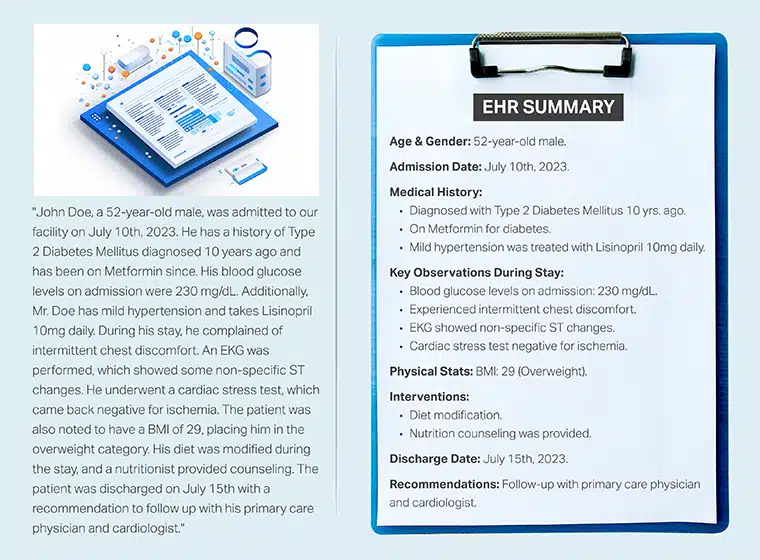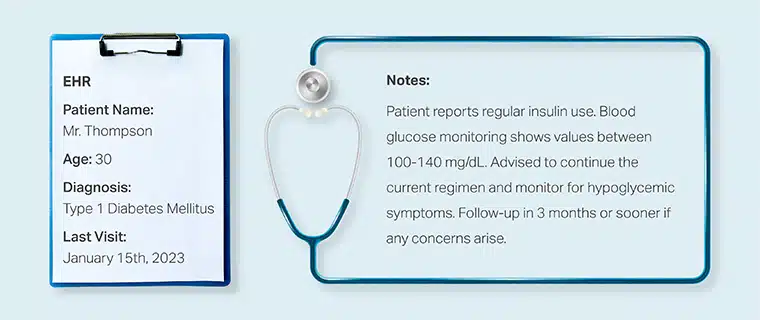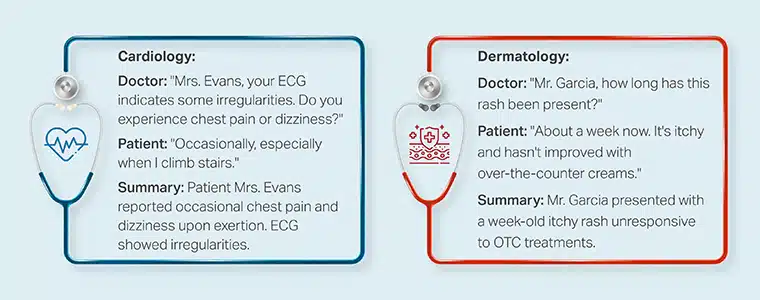In recent years, artificial intelligence (AI) has made significant strides in various industries, and healthcare is no exception. Generative AI, a subset of AI focused on creating new content based on existing data, is revolutionizing the way healthcare professionals approach diagnosis and treatment. Shaip, a leading provider of AI solutions, is at the forefront of this transformation, offering advanced medical datasets that fuel generative AI applications in the healthcare sector.
Shaip’s mission is to provide comprehensive data frameworks that enable precise, swift, and pioneering AI-driven diagnoses and treatments. With a deep understanding of the unique requirements of medical AI, Shaip offers an extensive range of datasets designed to power generative AI applications in healthcare.
1. Question & Answering Pairs
One of the key areas where Shaip’s generative AI solutions excel is in question-answering. By curating question-answer pairs from healthcare documents and literature, Shaip’s certified professionals facilitate the development of AI models that can suggest diagnostic procedures, recommend treatments, and assist doctors in providing insights by filtering relevant information. This technology has the potential to streamline the diagnostic process, reduce errors, and improve patient outcomes.
Our healthcare specialists produce top-tier Q&A sets, which include:
- Creating surface-level queries
- Designing deep-level questions
- Framing Q&A from Medical Tabular Data
The Q&A sets are created using various sources, such as:
- Clinical Guidelines & Protocols
- Patient-provider Interactions Data
- Medical Research Papers
- Pharmaceutical Product Information
- Healthcare Regulatory Documents
- Patient Testimonials, Reviews, Forums & Communities
2. Text Summarization
Another crucial aspect of Shaip’s generative AI offerings is text summarization. Healthcare professionals often face the challenge of sifting through vast amounts of information, such as electronic health records (EHRs), research articles, and doctor-patient conversations. Shaip’s healthcare specialists excel in distilling this information into clear and concise summaries, ensuring that professionals can quickly grasp core insights without having to spend hours reading through lengthy documents.
Our offerings include:
Text-based EHR Summarization: Encapsulate patient medical histories, treatments, and outcomes into an easily digestible format, enabling healthcare providers to quickly review and understand a patient’s complete medical journey.
Doctor-Patient Conversation Summarization: Extract key points, concerns, and action items from medical consultations, ensuring that critical information is not overlooked and facilitating better communication between healthcare providers and patients.
PDF-based Research Article Summarization: Distill complex medical research papers into their fundamental findings, conclusions, and clinical implications, allowing healthcare professionals to stay up-to-date with the latest developments in their field without spending excessive time on literature reviews.
Medical Imaging Report Summarization: Convert intricate radiology or imaging reports into simplified summaries, highlighting the most significant findings and recommendations, thereby enabling healthcare teams to make informed decisions more efficiently.
Clinical Trial Data Summarization: Break down extensive clinical trial results into the most crucial takeaways, including efficacy, safety, and potential applications, empowering healthcare stakeholders to evaluate the impact of new treatments or interventions rapidly.
By leveraging Shaip’s text summarization expertise, healthcare organizations can streamline their information processing, enhance decision-making, and ultimately improve patient care. Our healthcare specialists are dedicated to delivering high-quality, accurate, and relevant summaries that cater to the unique needs of the healthcare industry.
3. Synthetic Data Creation
In addition to question-answering and text summarization, Shaip also focuses on synthetic data creation. Synthetic data is critical in the healthcare domain for various purposes, such as AI model training and software testing, without compromising patient privacy. Shaip offers synthetic data creation services for the history of present illness (HPI) and progress notes, EHR notes, and doctor-patient conversation summaries across various medical specialties.
3.1 Synthetic Data HPI & Progress Notes Creation
The generation of artificial, but realistic, patient data that mimics the format & content of a patient’s history of present illness (HPI) and progress notes. This synthetic data is valuable for training ML algorithms, testing healthcare software, & conducting research without risking patient privacy.
3.2 Synthetic Data EHR Note Creation
This process entails the creation of simulated Electronic Health Record (EHR) notes that are structurally and contextually similar to real EHR notes. These synthetic notes can be used for training healthcare professionals, validating EHR systems, and developing AI algorithms for tasks such as predictive modeling or natural language processing, all while maintaining patient confidentiality.
3.3 Synthetic Doctor-Patient Conversation Summarization in Various Domains
This involves generating summarized versions of simulated doctor-patient interactions across different medical specialties, such as cardiology or dermatology. These summaries, although based on fictional scenarios, resemble real conversation summaries and can be used for medical education, AI training, and software testing without exposing actual patient conversations or compromising privacy.
Conclusion
Shaip’s generative AI solutions are powered by comprehensive and diverse datasets, stringent quality assurance procedures, and a commitment to data security and privacy. The company adheres to GDPR and HIPAA regulations, ensuring the protection of sensitive patient information.
The benefits of Shaip’s generative AI solutions in healthcare are numerous. By leveraging these technologies, healthcare professionals can improve the accuracy of diagnoses, save time and money on data collection, accelerate time-to-market for new treatments, and gain a competitive edge in the industry.
As the healthcare landscape continues to evolve, generative AI will play an increasingly vital role in shaping the future of diagnosis and treatment. Shaip is at the vanguard of this transformation, empowering healthcare professionals with the tools and datasets they need to deliver more accurate, personalized, and efficient care to patients worldwide.








